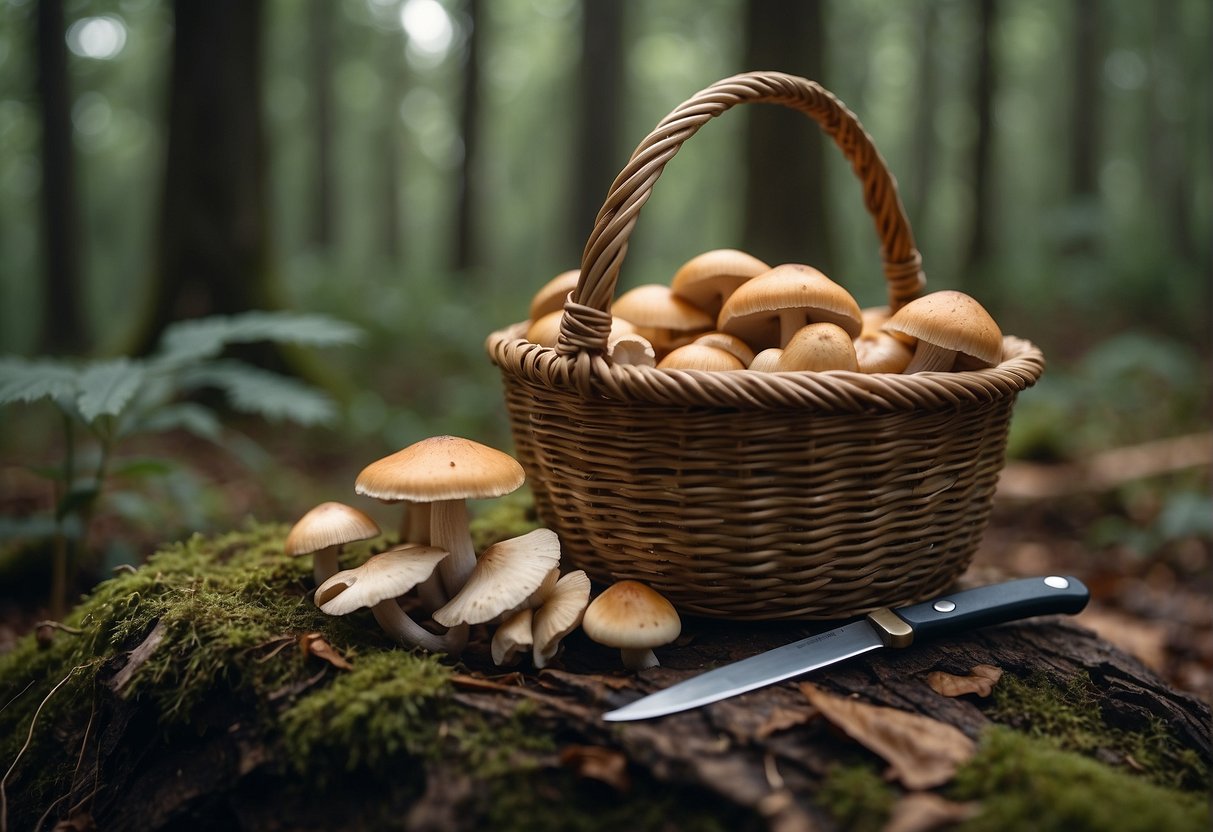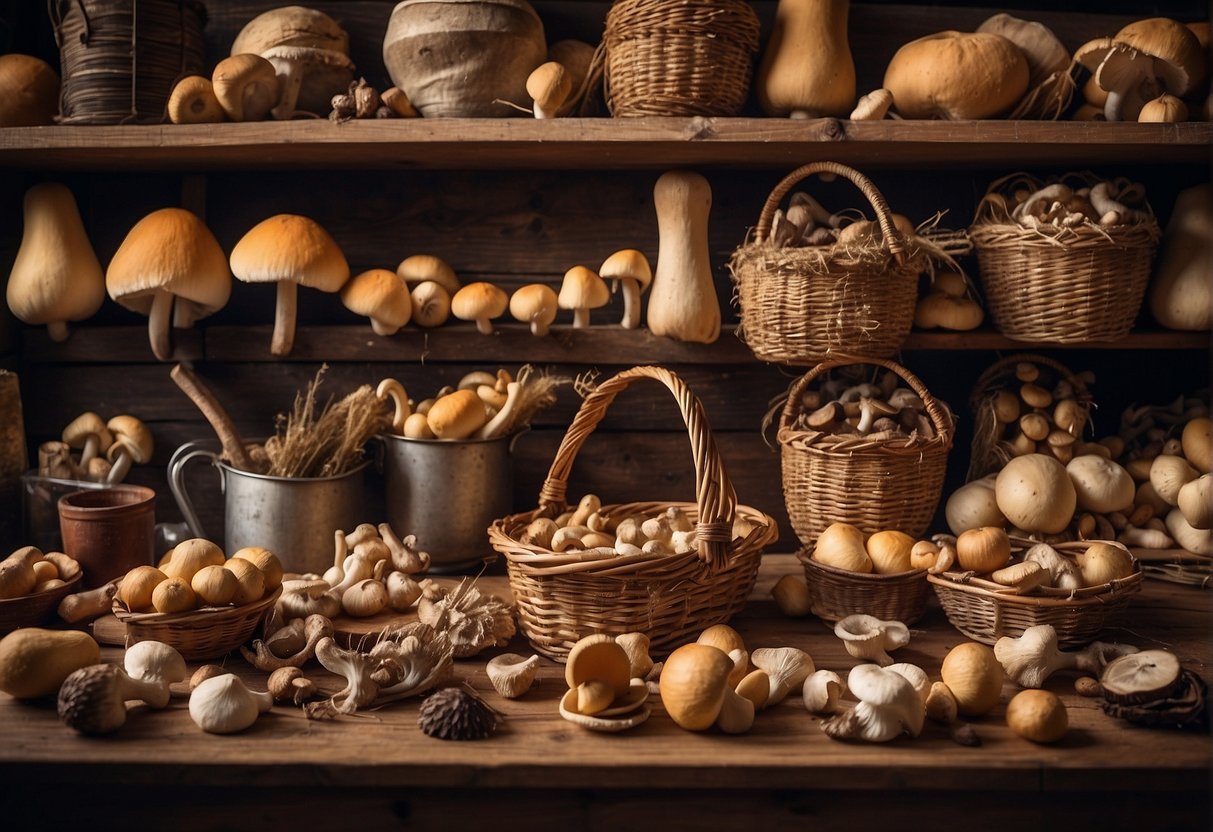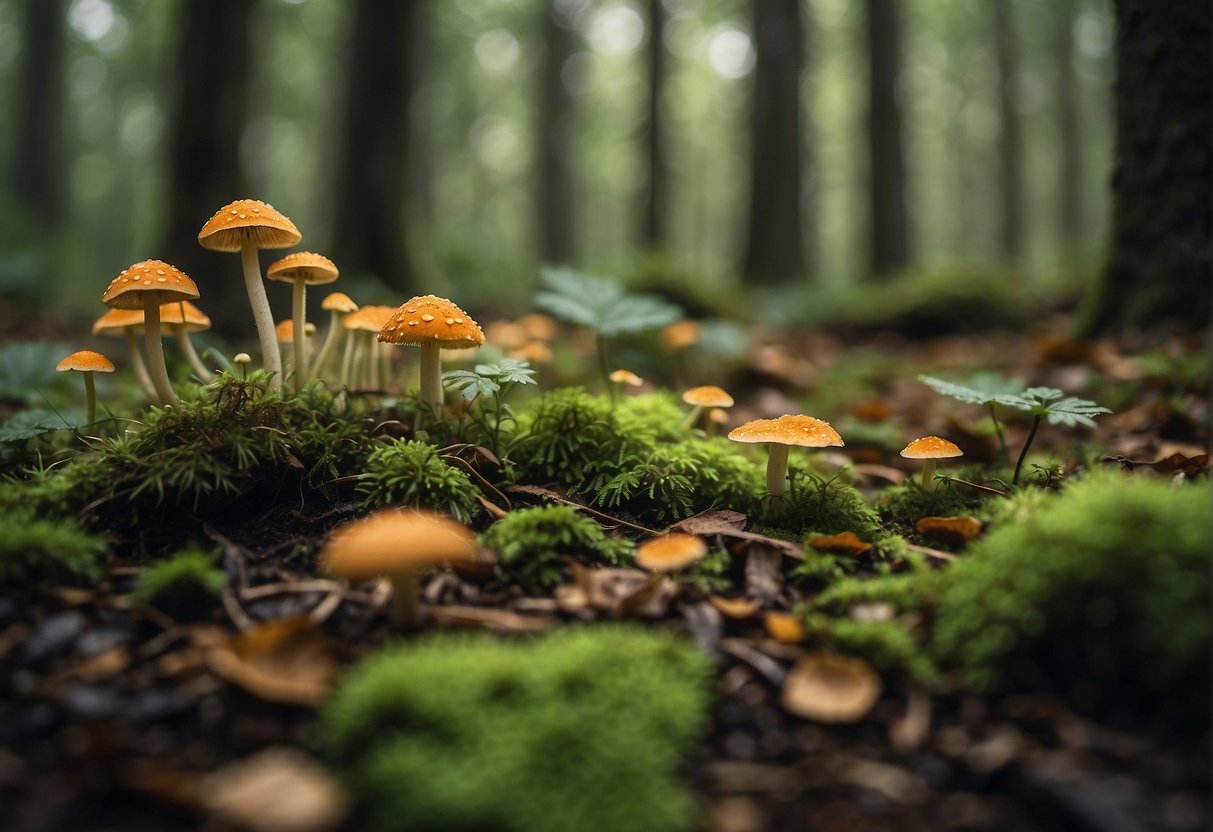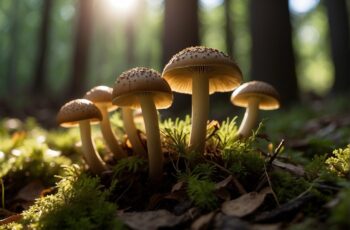Mushroom hunting is an age-old foraging activity that combines the thrill of the hunt with the joys of being outdoors. For those with a keen eye and a love of wild fungi, foraging for mushrooms like the highly prized morel can be both a passion and a pastime. Before you head out into the woods, you need to gear up with the right supplies to ensure success in your search for these elusive treasures.

Having the right tools not only makes your mushroom hunting experience more efficient but also helps to preserve the integrity of the mushrooms you find. Consider equipping yourself with a quality foraging bag or basket, which allows your mushrooms to breathe and stay fresh. A sturdy pair of hiking boots will navigate you through challenging terrains, while a keen cutting tool, like a mushroom knife, ensures you harvest mushrooms without damaging their delicate mycelium.
Remember, safety is paramount when you’re traversing the forest floor. Dress in bright or reflective clothing to be visible to others, especially in areas that may also be popular with hunters. A field guide to help you identify edible mushrooms from their toxic lookalikes is a must-have, as is bringing along a water bottle to stay hydrated on your foray. With the right preparations and respect for the ecosystem, mushroom hunting can be a fulfilling addition to your outdoor adventures.
Essential Gear for Mushroom Hunting
Before heading out on your mushroom hunting excursion, it’s essential to equip yourself with the right tools to ensure a successful and safe experience. The items listed below are crucial for collection, navigation, and maintaining your safety in the field.
Collection Tools
- Mesh Bag or African Market Basket: A mesh bag allows for the dispersion of mushroom spores as you walk, promoting future growth. An African market basket can also be handy for carrying your finds without damaging them.
- Foraging Knife: A knife with a brush can help you gently clean and cut mushrooms. A foraging bag or kit is also valuable to keep your hands free as you collect.
Navigation Aids
- Compass and GPS Device: Never underestimate the importance of a good compass or a reliable GPS device. It’s easy to lose your bearings in the woods, so these tools will help keep you on track.
Safety Equipment
- Bear Bells and Rain Jacket: Make noise as you move with bear bells, which can alert wildlife of your presence. Also, expect the unexpected and carry a rain jacket to stay dry.
- Hiking Sticks: Morel mushroom hiking sticks not only offer stability on uneven terrain but can also aid in searching under foliage without having to bend over constantly.
Identification and Education

When you’re in the forest, your ability to identify wild mushrooms correctly is vital for safe and enjoyable foraging. Equipping yourself with reliable field guides and identification tools will ensure you know what’s edible and what to avoid.
Field Guides
Peterson Field Guide to Mushrooms is your essential companion in the woods, offering clear descriptions and detailed illustrations. For an extensive dive into fungal facts, consider Mushrooms Demystified by David Arora, a comprehensive resource for North American mushrooms.
- The Complete Mushroom Hunter: This illustrated guide delivers practical advice on finding, harvesting, and enjoying wild mushrooms.
- All That the Rain Promises and More: A handy, pocket-sized guide that’s perfect for quick reference during your forays.
Identification Tools
A mushroom key is a systematic method that simplifies identification by separating mushrooms into groups based on physical features. Here’s a list to help you gather your kit:
- Knife: A sturdy knife for cutting stems and examining gills.
- Brush: To gently clean your specimens for a better view of vital characteristics.
- Magnifying Glass: For inspecting mushrooms’ intricate details.
- Notebook: Keep records of your finds, noting the environment and characteristics.
Each tool complements your field guides, adding context and clarity as you confirm your finds. With these resources, you’re well on your way to becoming a proficient mushroom hunter.
Post-Harvest Handling and Processing

Once you’ve successfully harvested mushrooms, it’s critical to process them properly to maintain their quality. Proper cleaning and storage extend the life of your forage, ensuring nothing goes to waste.
Cleaning Supplies
To start, you’ll need a soft brush to gently remove any dirt or debris from your mushrooms. It’s important to avoid washing them directly under water as this can cause them to become soggy and spoil more quickly. Instead, use the brush to meticulously clean each mushroom, preserving its natural flavor and texture.
Storage and Preservation
For long-term storage, a food dehydrator becomes your best friend in preserving the bounty. Dehydrating mushrooms with proper airflow ensures they retain most of their flavor while extending shelf life significantly. Store your dehydrated mushrooms in air-tight containers, preferably with a tight-fitting lid to prevent any moisture from getting in. Remember to label your containers with the date of harvest, as even dried mushrooms have a finite shelf life.
Seasonal and Environmental Considerations

When you set out for mushroom hunting, being mindful of the season and the environment you’re entering is crucial for your success. Understanding these aspects ensures you’re harvesting at the right time and in the right manner, safeguarding both your safety and the health of the ecosystems you visit.
Weather Awareness
The seasons, particularly spring and the changing weather patterns, strongly influence the growth of wild mushrooms. You must be aware that morels and chanterelles often surface after rainfall, as rain boosts the moisture levels necessary for spores to develop into fruitful mycelium networks.
-
Spring: Start searching when soil temperatures near 50-55 degrees Fahrenheit. This is typically post-winter, just after the snowmelt, when the ground is warming. Rain can be your ally, as it creates the perfect conditions for mushrooms like the prized morels. Be prepared for these conditions with sturdy footwear that provides good traction and waterproofing.
-
Harvesting: While rain may help mushrooms to emerge, it’s equally important that you are equipped with gear to keep you dry. A good rain jacket and water-resistant bags to protect your findings are essential.
Ecosystem Impact
As a responsible forager, you must minimize your impact on the ecosystems where you hunt. While searching for wild mushrooms like morels, chanterelles, and porcini, it’s vital that you understand the role of mushrooms in the environment. They help decompose organic matter, enriching the soil, and supporting other plant life, such as dandelions.
-
Mushroom Picking: Use a woven basket or a mesh bag to collect mushrooms; this allows spores to continue spreading as you walk, promoting mushroom growth for future seasons.
-
Avoid Damage: Always avoid trampling on the undergrowth and disturbing the habitat, which can affect not just other mushroom hunters but the overall health of the forest.
-
Poisonous Mushrooms: Learn to distinguish between edible and poisonous mushrooms, as a mistake can be dangerous. This knowledge also enables you to leave toxic species undisturbed, maintaining the balance of the habitat.
By keeping informed and considerate, you can enjoy the rewarding experience of mushroom hunting while preserving the natural wonder for years to come.


